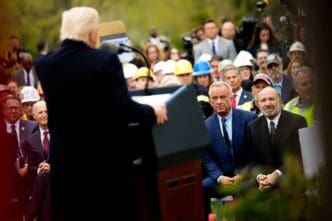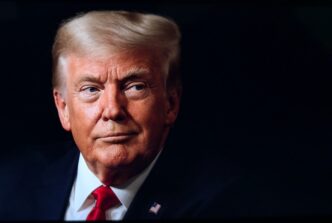WASHINGTON D.C. – The United States economy contracted more sharply than initially estimated in the first quarter of 2025, dragged down by an unexpected surge in imports as American businesses scrambled to stockpile goods in anticipation of President Donald Trump’s own tariff deadlines.
The Commerce Department reported Thursday that the nation’s real gross domestic product (GDP) fell at an annualized rate of 0.5% in the first three months of the year. This marks a significant downward revision from the 0.2% decline previously reported and was driven by lower-than-expected consumer spending and a sharp drop in exports.
The most significant factor in the economic downturn was a massive, tariff-induced import boom. In a rush to get ahead of impending levies, particularly on goods from China, businesses increased their imports by a staggering 37.9%—the fastest rate of growth since 2020. This flood of foreign goods ultimately subtracted nearly 4.7 percentage points from the first-quarter GDP, effectively erasing underlying growth in other sectors of the economy.
Despite the gloomy first-quarter report, economists are forecasting a significant rebound in the second quarter, with most projections anticipating a return to growth at a rate of around 3%. This optimism is based on the consensus that the import surge was a one-time event, a distortion created by the unique circumstances of the trade war. With inventories now full, the drag from imports is expected to diminish or even reverse in the coming months.
However, a cloud of economic uncertainty persists as the Trump administration approaches a series of critical July deadlines for implementing new, higher tariffs. The ongoing trade disputes have prompted key trading partners, including China and the European Union, to actively pursue alternative trade partnerships to reduce their reliance on the U.S. market.
The administration’s aggressive trade posture has drawn sharp criticism from international allies. Speaking recently, French President Emmanuel Macron labeled the escalating trade war an “aberration,” advocating for the complete removal of tariffs after NATO members agreed to increase their defense spending—a key demand from President Trump.
For his part, President Trump has deferred some planned tariffs amid ongoing negotiations but has held firm on a July 9 deadline for imposing new tariffs on the European Union. This leaves businesses and markets in a precarious position, waiting to see if a last-minute deal can be struck or if the global economy is headed for another round of disruptive trade conflict.








